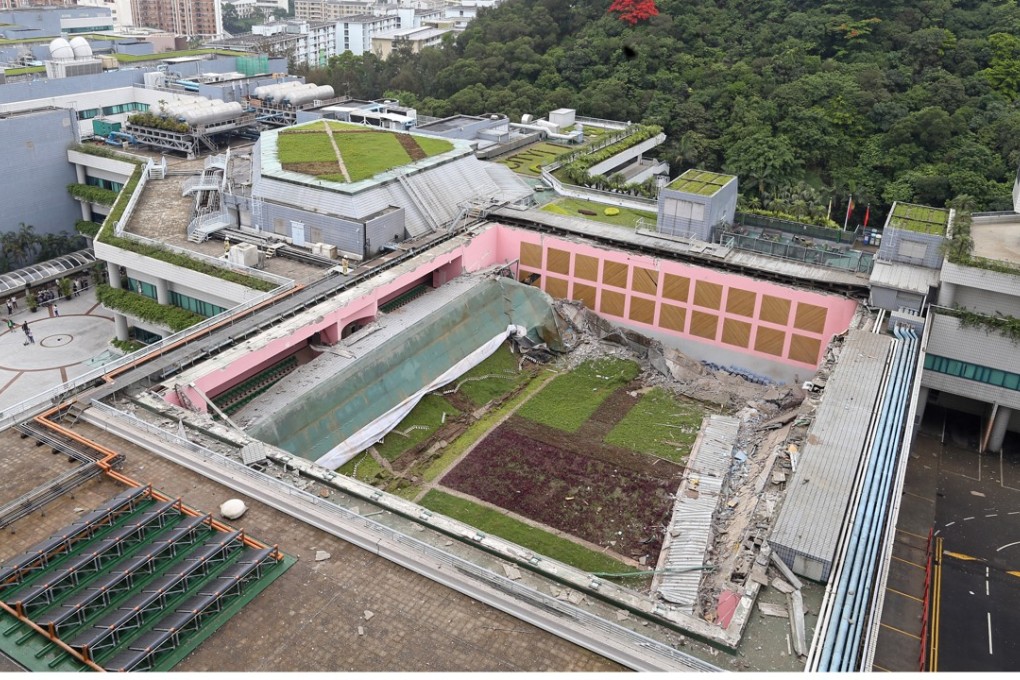No prosecutions planned over collapse of City University of Hong Kong roof
Final government investigation report points to overloading at sports facility, but professionals likely to face only internal hearings

In the final investigation report released by the Buildings Department, the government also confirmed that the university’s green roof did not require prior approval from the department under building rules, sparking calls to plug the loophole.
The department said it was seeking further legal advice as to whether disciplinary action should be taken against relevant professionals.
The department concluded that overloading caused the collapse of the roof of the Hu Fa Kuang Sports Centre, which was filled with hundreds of students taking an exam just a few days earlier.
The report said three factors were involved – a levelled layer of material applied to the surface of the roof structure being thicker than the original design, the laying of greenery on the roof and large puddles of water.